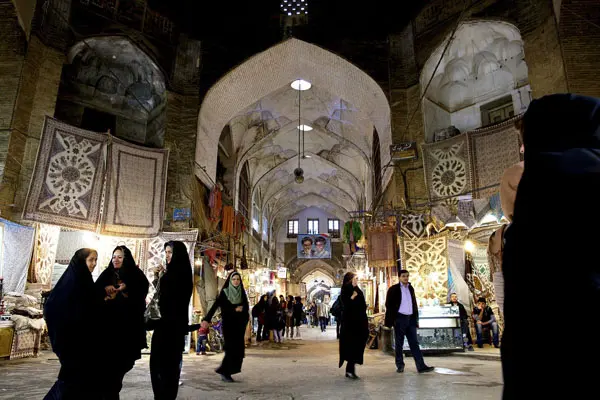——Qazvin——
Qazvin city view
Located 150 km northwest of Tehran, Qazvin is the largest city and capital of Qazvin Province covering an area of 5,700 hectares and with a population of more than 380,000. Archeological findings in the Qazvin plain reveal that people began to settle there 9,000 years ago.
The city of Qazvin has been prosperous during its being, and was selected as the capital of Safavid state for more than 50 years.
Qazvin Emamzadeh Hossein
Qazvin is regarded as a significant city in Iran in terms of the geographical, historical, economical and social Atlas. Keeping this position would become clearer by knowing these points that some of the first economical and industrial developments are originated from this city. The first modern street (Sepah Street), the first modern irrigation system in Iran (irrigation system of Qazvin plain) and the first industrial state in Iran (Alborz industrial state) are located in Qazvin.
Unique location, temperate climate, and availability of standard roads and other necessary infrastructure combine together to make it an ideal place for investment in industrial, commercial and tourism sectors.
According to the latest statistics published by the ministry of industry, mines and trade, Qazvin is among the six top provinces in the field of attracting industrial and commercial investment in 2014 and the second province in the field of attracting foreign investment.
——Isfahan——
Men in a hookah lounge in Isfahan
Isfahan is a large city located almost in the center of Iran where the main north-south and east-west roads meet. It is estimated that the Isfahan metropolitan area has a population of about 4,000,000, making it the second most populous metropolitan area in Iran after the capital Tehran.
The Great Bazaar of Isfahan
It is not well known when exactly Isfahan was first established as a city. But, it is known that its origins go back more than 1,500 years. While Isfahan grew considerably from the early 11th through the 18th century, it flourished particularly during the Safavid dynasty in the 16th century when it became the capital of the old Persia for the second time. Isfahan was once one of the largest cities in the world.
The Great Bazaar of Isfahan
Isfahan is well known for its beautiful historic Islamic architecture and works of art ranging from world renowned Persian rugs to various handcrafts. Isfahan features 1300 year-old covered bazaars, bridges, palaces, mosques, and minarets. The most famous Persian description of the city of Isfahan is “Esfahan Nesf-e Jahan” which means Isfahan is half of the world. Every year, Isfahan attract hundreds of thousands of visitors from all over Iran and around the world.
Zayandeh River in Isfahan
 简体中文
简体中文

